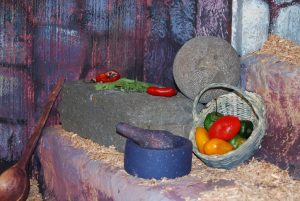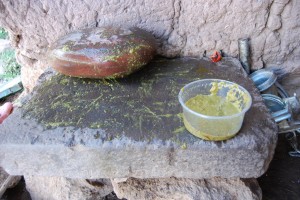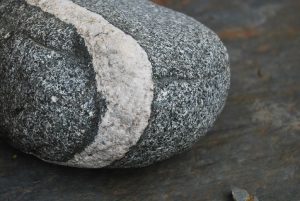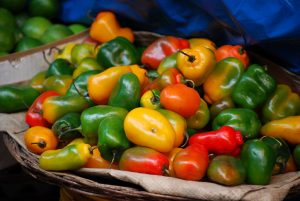The Best Flavor in Cuzco’s Cooking Still Comes from the Batán, the Grinding Stones.

If you make a hot sauce on what we in Cuzco call a batán, a grinding stone, you obtain the true and traditional flavor of our uchucuta, as the majority of Cusqueños call our hot sauce. People say the stone is what gives it the flavor that makes you sigh with pleasure when you eat it.
Since ancient times the people of Cuzco have used these grinding stones. They consist of a base, which is a large, flat stone, alone with an arched stone top for grinding with a rocking motion. The batán is not sold in the market; It’s stones are fine ones that people bring from the rivers that are closest to Cuzco, such as the Vilcanota. People go down to the rivers to search for the right combination of a flat stone and an oval one to make a batán.
The river, in its rush downwards, gives form to these stones. We look for ones that are well formed and fine. Some of them come in different colors. We can find many; our only problem is taking them home.
On them you can make many different kinds of hot sauces and uchukutas, as well as many other foods. The batán is a very flexible, if rustic, kitchen tool.

Families in the city of Cuzco still maintain this tradition, though the truth is that many do not use them much any more. If they use the batán it is to prepare the irresistible uchukuta, the hot sauce, or to grind some grains. Our mothers and grandmothers used this tool to prepare many other things.

Today the batán is being replaced by the blender. Most everyone uses blenders to grind things now. They use them for making hot sauces and other foods, even if the result is not as satisfactory, because it is easier and quicker to run food through the electronic machine. But let us be honest. The flavor and texture are not the same as when they are made on the batán.
Not too long ago, some ten years back, my grandmother was still alive. She was a plump Mestiza woman from Cuzco. She was a traditional woman and wore the wide, pleated skirts we call polleras, a hat, and she had long, braided hair. She let it fall down her back in two braids from under her white hat. That is how all the older Mamachas Cuzqueñas, the dear women of Cuzco dressed.
From early in the morning, every day, she would sit on a stool next to her batán to begin to grind all the ingredients for lunch. On her stone batán she would grind grains and vegetables, as well as potatoes, hot peppers, condiments, and much more.

To make soups, for example, she would first slice the ingredient–whether chuño (freeze dried potato), papa helada (frozen potatoes), or corn to make the corn gruel, the sara lawa. To make a sauce she would first pick fresh cilantro from her garden, then mix it with peanuts, and sliced red or green rocoto peppers. From one side to the other she would rock the top stone to grind everything up finely.
The flat stone of the base would also serve as a cutting board for dicing vegetables, or as a table for preparing all the ingredients for a meal.

In the very traditional picanterías of Cuzco you can still see women using these batanes in the kitchens. While some restaurants just use them as decorations to give a touch of the authentic and the past, others still require them in their kitchens.
Even though the custom of using the batán is declining in the city of Cuzco, in our rural zones the majority of persons still use them to get the unique flavor of the food that the Pachamama, the Mother Earth, gives us.





